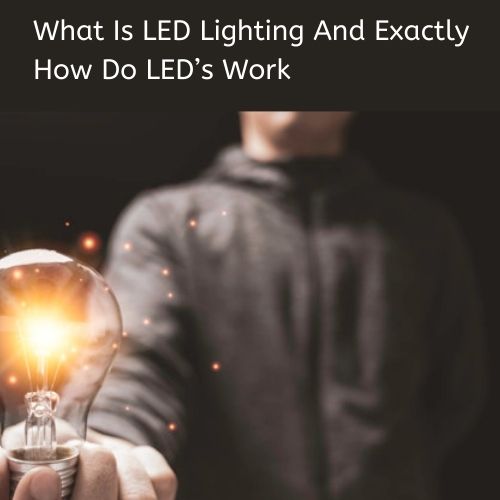What is LED Lighting and Exactly How Do LED’s Work?
In the article we’ll be discussing a important topic that’s “What is LED Lighting and Exactly How Do LED’s Work?” let’s talk about it in detail:
What is a LED
“LED” stands for “light emitting diode”. The first two parts of this name are easy to actually understand – “light emitting” implies that it gives off light – but what exactly is actually a “diode”, and what does it do? In order to answer that question, we need to get a bit scientific.
All diodes emit photons (which are the particles of electromagnetic energy), however only particular kinds of diodes emit that electromagnetic energy as light rather than heat. A light emitting diode is actually a kind of solid-state lighting (SSL) technology, meaning that it emits light from a piece of solid matter. In this case, that piece of solid matter may be a two-lead semiconductor. We’ll explain how this actually works in the next section of the article.
Types of LEDs
There are two basic types of LEDs:
Indicator – an inexpensive, low-power device that is used as indicator lights in cars, panels, and other electronic devices.
led guide illuminator
Illuminator – a high-power device that provides illumination. These are the kind of LEDs you purchase to illuminate rooms in your home or office. They can be found in a variety of different styles, shapes and colors suitable for nearly any application.
How do LEDs work?
An LED is capable of generating light due to the arrangement of the 2 semiconductor materials located between its electrodes:
N-type: A semiconductor with extra electrons (also referred to as extra negatively charged particles).
P-type: A p-type is a sort of semiconductor with extra holes (also referred to as extra positively charged particles).
Connecting the n-type semiconductor to the negative electrode and also the p-type semiconductor to the positive electrode activates the electrons so that they can flow across the junction from the negative to the positive layer. As the extra electrons (which are negatively charged particles) move through the extra holes (that is the positively charged particles), they emit light.
The conductive material that actually makes up LEDs is usually aluminum-gallium-arsenide (AlGaAs), but there are other different kinds as well. The materials are selected specifically because they produce photons which will be released on the visible portion of the light spectrum. The sort of material chosen and the amount used further alters the colour of the light because each material generates photons at different wavelengths, which in turn affects how it appears to the human eye.


